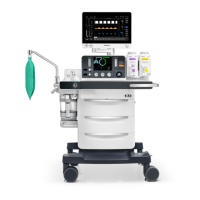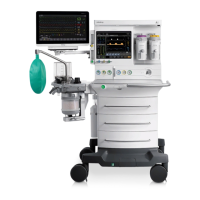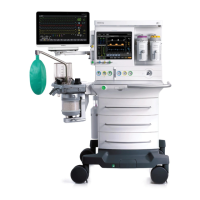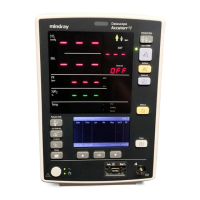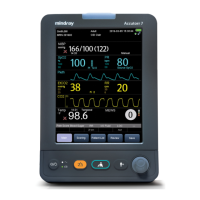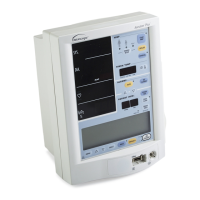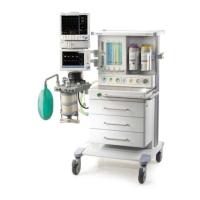A7™ Operating Instructions 046-004667-00 7 - 3
Maintenance Theory of Operation
7.1 Theory of Operation
The A7 System is a pneumatically-driven and electronically-controlled anesthesia machine. Three
types of supply gases are available: N
2
O, O
2
, and Air. The user adjusts supply gas flows through the
flowmeters. The mixed gas outputted from the flowmeters is further mixed with the anesthetic agent
inside the anesthetic vaporizer to form the fresh gas.
During the inspiratory phase, the microprocessor-controlled inspiratory valve produces the preset
drive gas inspiratory flow and the expiratory valve closes. The drive gas enters the bellows dome in
the patient circuit and depresses the bellows inside the dome to move downward. This forces the gas
inside the bellows to enter the patient's lungs until the end of the inspiratory phase.
During the expiratory phase, the inspiratory valve closes and the expiratory valve opens. The patient
can expire freely. The patient's expired gas, mixed with the fresh gas, enters and lifts the bellows
inside the dome. The drive gas outside the bellows is scavenged to the Anesthetic Gas Scavenging
System (AGSS) until the end of the expiratory phase.
During ventilation, the ventilator performs real-time monitoring over airway pressure and flow. If the
airway pressure or minute volume is outside the user-preset alarm limits, an audible and visible alarm
occurs. When the airway pressure is higher than the limit value determined by the PEAK high alarm
limit, the ventilator enters the expiratory phase automatically to avoid causing injury to the patient.
Additionally, the ventilator has a built-in pressure safety valve that opens at an approximate pressure
of 110 cmH
2
O (11 kPa).
7.2 Block Diagram
FIGURE 7-1 Block Diagram of A7 System
Anesthetic Ventilator
Anesthetic Gas
Delivery Device
(Vaporizer)
Anesthetic Gas Delivery System
Anesthetic Gas
Scavenging System
(AGSS)
Breathing
System
Hospital’s
Disposal System
Patient
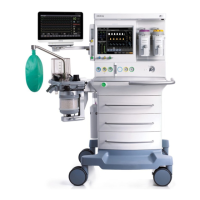
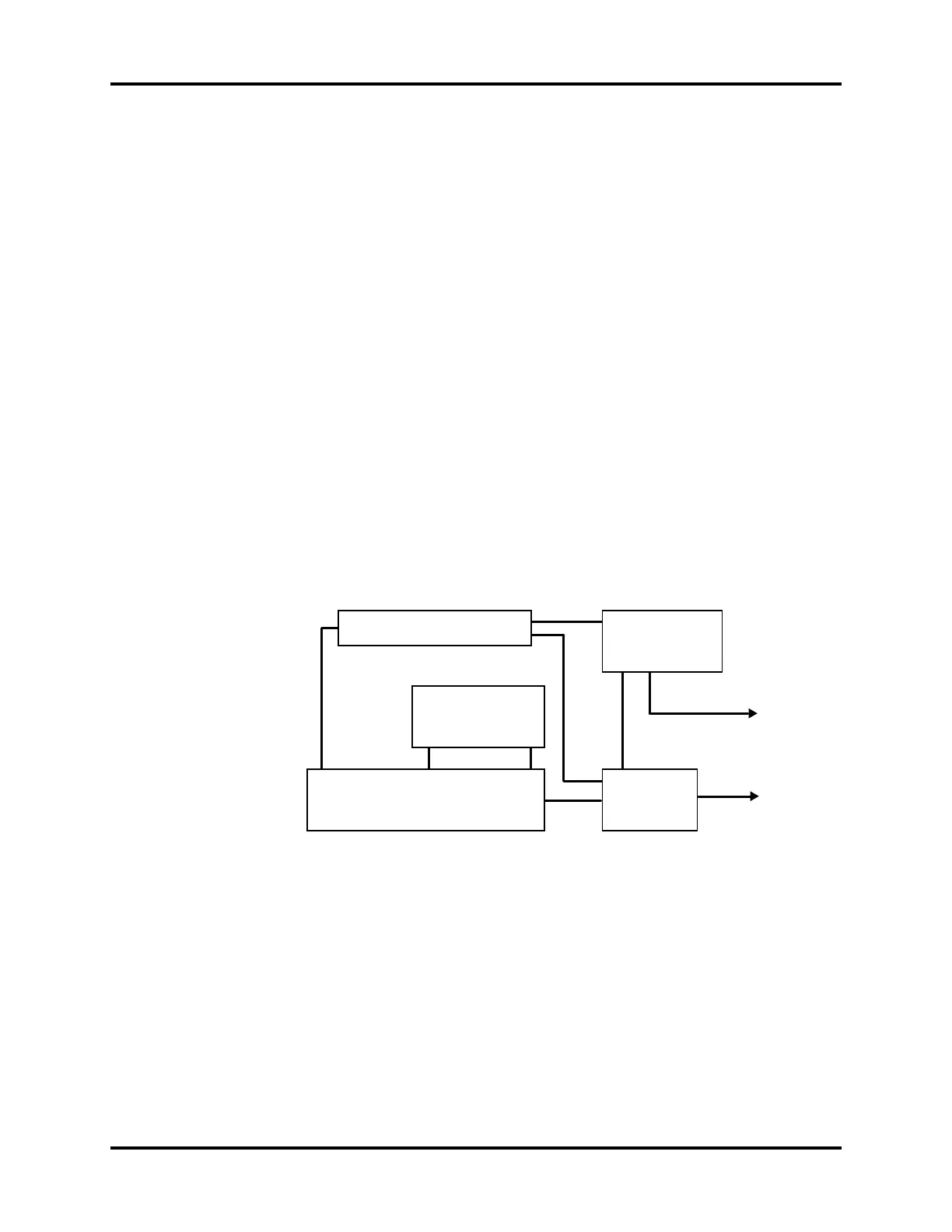